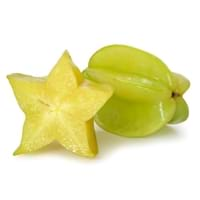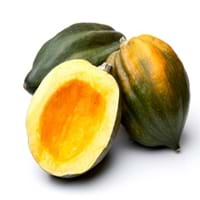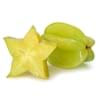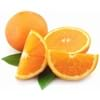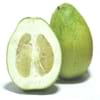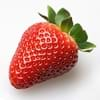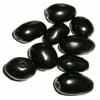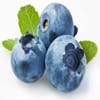Health Benefits
Cancer prevention, Heat stroke treatment
Anti-inflammatory properties, Arthritis treatment, Regulates Blood Sugar
General Benefits
Anti oxidant properties, Anti-inflammatory properties, Digestive aid, Maintains healthy cholesterol level, Treatment of sore eyes
Boosts immune system, Controls blood sugar levels, Digestive aid
Skin Benefits
Anti-aging benefits, Heals sunburn, Skin rejuvenation
Nourishes skin, Protects skin from oxidative stress
Hair Benefits
Promotes longer and healthier hair, Protects hair
Prevents hair loss, Promotes longer and healthier hair, Regulates hair growth
Allergy Symptoms
NA
Asthma, Red rash, Swelling of mouth, tongue or lips
Side Effects
Nausea, Vomiting
Diarrhoea, Vomiting
Best Time to Eat
As a snack in the late afternoon, Eat the fresh ones, avoid mixing with any other foods, don't eat after meal., Strictly avoid empty stomach
Along with meal, As a snack in the late afternoon, Don't eat after meal, Eat the fresh ones, avoid mixing with any other foods, don't eat after meal.
Vitamin B5 (Pantothenic Acid)
Vitamin C (Ascorbic Acid)
Vitamin E (Tocopherole)
Not Available
Vitamin K (Phyllochinone)
Not Available
Lutein+Zeaxanthin
Not Available
Calories in Fresh Fruit with Peel
Calories in Fresh Fruit without Peel
Not Available
Not Available
Calories in Frozen Form
Not Available
Calories in Canned Form
Not Available
Calories in Jam
Not Available
Calories in Pie
Not Available
Season
Autumn, Spring, Summer
Winter
Varieties
King, Bell, Sri Kembangan, Arkin and Fwang Tung
Bush Table Queen, Heirloom Table Queen, Festival Hybrid, Early Acorn Hybrid, Table Ace, Ebony and Cream of the Crop
Color
Golden yellow, Green
Dark green, Green-yellow, Orange green
Inside Color
Yellowish Green
Yellow
Shape
Oval and Star(Cross section)
Round
Taste
Crisp, Juicy, Sweet
Sweetish
Origin
Sri Lanka
Central America, North America, Unknown
Grows on
Not Available
Vines
Soil Type
Loam, Well-drained
Well-drained
Climatic Conditions
Moist, Warm to hot climate
Cold, Sunny
Facts about
- When carambola is cut horizontally, it forms a star.
- It is believed that carambola helps to cure hangover.
- Entire carambola is edible, including its skin.
- 2 varieties of carambola are cultivated: tart & sweet.
- It was named as Acorn Squash for its resemblance to a large ribbed acorn.
- It is said that squash was being grown in Mexico as long as 10,000 years ago.
- It was the first food cultivated by native American Indians.
Top Producer
Taiwan
China
Other Countries
Australia, Guyana, India, Israel, Malaysia, Philippines, United States of America
Egypt, India, Iran, Italy, Mexico, Russia, Turkey, Ukraine, United States of America
Top Importer
Europe
Costa Rica
Top Exporter
Malaysia
United States of America
Botanical Name
Averrhoa carambola
Cucurbita Pepo
Synonym
Not Available
Winter Squash
Subkingdom
Tracheobionta
Tracheobionta
Division
Magnoliophyta
Magnoliophyta
Class
Magnoliopsida
Magnoliopsida
Subclass
Rosidae
Dillenhidae
Order
Oxalidales
Cucurbitales
Family
Oxalidaceae
Cucurbitaceae
Species
A. carambola
Pepo
Generic Group
Not Available
Not Available
Difference Between Carambola and Acorn squash
We might think that Carambola and Acorn squash are similar with respect to nutritional value and health benefits. But the nutrient content of both fruits is different. Carambola and Acorn squash Facts such as their taste, shape, color, and size are also distinct. The difference between Carambola and Acorn squash is explained here.
The amount of calories in 100 gm of fresh Carambola and Acorn squash with peel is 31.00 kcal and 40.00 kcal and the amount of calories without peel is Not Available and Not Available respectively. Thus, Carambola and Acorn squash belong to Low Calorie Fruits and Low Calorie Fruits category.These fruits might or might not differ with respect to their scientific classification. The order of Carambola and Acorn squash is Oxalidales and Cucurbitales respectively. Carambola belongs to Oxalidaceae family and Acorn squash belongs to Cucurbitaceae family. Carambola belongs to Averrhoa genus of A. carambola species and Acorn squash belongs to Cucurbita genus of Pepo species. Beings plants, both fruits belong to Plantae Kingdom.
